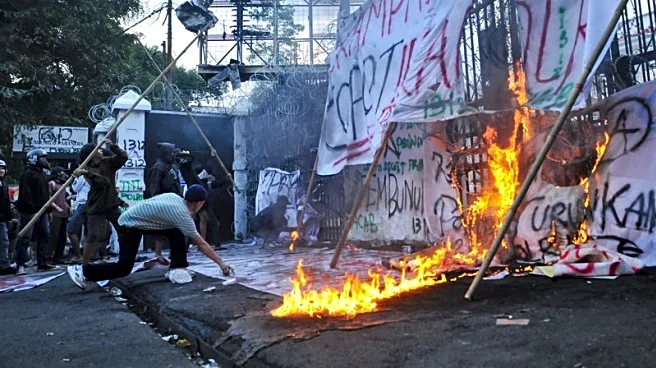What is the story about?
What's Happening?
The Tibet Autonomous Region (TAR) is marking its 60th anniversary, celebrating significant economic and social progress. Since its establishment in 1965, Tibet has undergone dramatic transformations, moving from a feudal society to a modern region with improved infrastructure and living standards. The region's GDP has grown substantially, and poverty has been largely eradicated. Infrastructure projects like the Qinghai-Tibet Railway have enhanced connectivity, while healthcare and education have seen major improvements. The anniversary is seen as a rebuttal to criticisms from the Dalai Lama and other international voices, emphasizing Tibet's development under Chinese governance.
Why It's Important?
Tibet's development is a key aspect of China's broader economic and political strategy. The region's progress serves as a counter-narrative to international criticisms regarding human rights and cultural preservation. The economic growth and infrastructure development in Tibet are crucial for integrating the region into China's national framework, potentially reducing separatist sentiments and enhancing stability. The anniversary highlights China's commitment to regional development, which could influence its approach to other autonomous regions.
What's Next?
China plans to continue investing in Tibet's infrastructure and economic development, with projects like the Xinjiang-Xizang Railway set to further boost connectivity and tourism. The Chinese government is likely to maintain its narrative of progress and stability in Tibet, countering international criticisms. The focus on development may lead to increased economic opportunities for Tibetans, further integrating the region into China's national economy.
Beyond the Headlines
The anniversary underscores the complex relationship between cultural preservation and economic development in Tibet. While the Chinese government emphasizes progress, critics argue that cultural and religious freedoms are compromised. This tension highlights broader issues of governance and autonomy in regions with distinct cultural identities, raising questions about the balance between development and cultural preservation.
AI Generated Content
Do you find this article useful?















